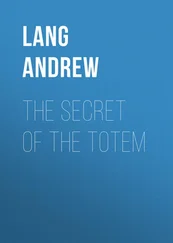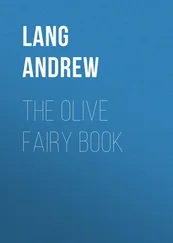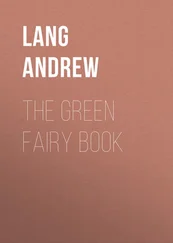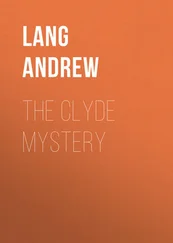Andrew Lang - The Mystery of Mary Stuart
Здесь есть возможность читать онлайн «Andrew Lang - The Mystery of Mary Stuart» — ознакомительный отрывок электронной книги совершенно бесплатно, а после прочтения отрывка купить полную версию. В некоторых случаях можно слушать аудио, скачать через торрент в формате fb2 и присутствует краткое содержание. Жанр: foreign_antique, foreign_prose, на английском языке. Описание произведения, (предисловие) а так же отзывы посетителей доступны на портале библиотеки ЛибКат.
- Название:The Mystery of Mary Stuart
- Автор:
- Жанр:
- Год:неизвестен
- ISBN:нет данных
- Рейтинг книги:4 / 5. Голосов: 1
-
Избранное:Добавить в избранное
- Отзывы:
-
Ваша оценка:
- 80
- 1
- 2
- 3
- 4
- 5
The Mystery of Mary Stuart: краткое содержание, описание и аннотация
Предлагаем к чтению аннотацию, описание, краткое содержание или предисловие (зависит от того, что написал сам автор книги «The Mystery of Mary Stuart»). Если вы не нашли необходимую информацию о книге — напишите в комментариях, мы постараемся отыскать её.
The Mystery of Mary Stuart — читать онлайн ознакомительный отрывок
Ниже представлен текст книги, разбитый по страницам. Система сохранения места последней прочитанной страницы, позволяет с удобством читать онлайн бесплатно книгу «The Mystery of Mary Stuart», без необходимости каждый раз заново искать на чём Вы остановились. Поставьте закладку, и сможете в любой момент перейти на страницу, на которой закончили чтение.
Интервал:
Закладка:
The Lennox Papers also enable us to add new and dramatically appropriate anecdotes of Mary and Darnley, while, by giving us some hitherto unknown myths current at the moment, they enable us to explain certain difficulties which have puzzled historians. The whole subject throws a lurid light on the ethics and the persons of the age which followed the Reformation in Scotland. Other novelties may be found to emerge from new combinations of facts and texts which have long been familiar, and particular attention has been paid to the subordinate persons in the play, while a hitherto disregarded theory of the character of Bothwell is offered; a view already, in part, suggested by Mignet.
The arrangement adopted is as follows:
First, in two preliminary chapters, the characters and the scenes of the events are rapidly and broadly sketched. We try to make the men and women live and move in palaces and castles now ruinous or untenanted.
Next the relations of the characters to each other are described, from Mary’s arrival in Scotland to her marriage with Darnley; the murder of Riccio, the interval of the eleven predicted months that passed ere beside Riccio lay ‘a fatter than he,’ Darnley: the slaying of Darnley, the marriage with Bothwell, the discovery of the Casket, the imprisonment at Loch Leven, the escape thence, and the flight into England.
Next the External History of the Casket Letters, the first hints of their existence, their production before Elizabeth’s Commission at Westminster, and Mary’s attitude towards the Letters, with the obscure intrigues of the Commission at York, and the hasty and scuffling examinations at Westminster and Hampton Court, are described and explained.
Next the Internal Evidence of the Letters themselves is criticised.
Finally, the later history of the Letters, with the disappearance of the original alleged autograph texts, closes the subject.
Very minute examination of details and dates has been deemed necessary. The case is really a police case, and investigation cannot be too anxious, but certain points of complex detail are relegated to Appendices.
In writing the book I have followed, as Socrates advises, where the Logos led me. Several conclusions or theories which at first beguiled me, and seemed convincing, have been ruined by the occurrence of fresher evidence, and have been withdrawn. I have endeavoured to search for, and have stated, as fully as possible, the objections which may be urged to conclusions which are provisional, and at the mercy of criticism, and of fresh or neglected evidence.
The character of Mary, son naturel , as she says, or is made to say in the most incriminating Letter, is full of fascination, excellence and charm. Her terrible expiation has won the pity of gentle hearts, and sentiment has too often clouded reason, while reaction against sentiment has been no less mischievous. But History, the search for truth, should be as impersonal as the judge on the bench. I am not unaccustomed to be blamed for ‘destroying our illusions,’ but to cultivate and protect illusion has never been deemed the duty of the historian. Mary, at worst, and even admitting her guilt (guilt monstrous and horrible to contemplate) seems to have been a nobler nature than any of the persons most closely associated with her fortunes. She fell, if fall she did, like the Clytæmnestra to whom a contemporary poet compares her, under the almost demoniacal possession of passion; a possession so sudden, strange and overpowering that even her enemies attributed it to ‘unlawful arts.’
I have again to acknowledge the almost, or quite, unparalleled kindness of Father Pollen in allowing me to use his materials. He found transcripts of what I style the ‘Lennox MSS.’ among the papers of the late learned Father Stevenson, S.J. These he collated with the originals in the University Library at Cambridge. It is his intention, I understand, to publish the whole collection, which was probably put together for the use of Dr. Wilson, when writing, or editing, the ‘Actio,’ published with Buchanan’s ‘Detection.’ Father Pollen has also read most of my proof-sheets, but he is not responsible for any of my provisional conclusions. I have also consulted, on various points, Mr. George Neilson, Dr. Hay Fleming, Mr. A. H. Millar, and others.
Miss Dorothy Alston made reduced drawings, omitting the figures, of the contemporary charts of Edinburgh, and of Kirk o’ Field. Mr. F. Compton Price supplied the imitations of Mary’s handwriting, and the facsimiles in Plates A B, B A, &c.
For leave to photograph and publish the portrait of Darnley and his brother I have to acknowledge the gracious permission of his Majesty, the King.
The Duke of Hamilton has kindly given permission to publish photographs of the Casket at Hamilton Palace (see Chapter XVIII. Конец ознакомительного фрагмента. Текст предоставлен ООО «ЛитРес». Прочитайте эту книгу целиком, купив полную легальную версию на ЛитРес. Безопасно оплатить книгу можно банковской картой Visa, MasterCard, Maestro, со счета мобильного телефона, с платежного терминала, в салоне МТС или Связной, через PayPal, WebMoney, Яндекс.Деньги, QIWI Кошелек, бонусными картами или другим удобным Вам способом.
).
The Earl of Morton has been good enough to allow his admirable portraits of Mary (perhaps of 1575) and of the Regent Morton to be reproduced.
Mr. Oliphant, of Rossie, has placed at my service his portrait of Mary as a girl, a copy, probably by Sir John Medina, of a contemporary French likeness.
To the kindness of the Right Hon. A. J. Balfour and Miss Balfour we owe the photographs of the famous tree at Whittingham, Mr. Balfour’s seat, where Morton, Lethington, and Bothwell conspired to murder Darnley.
The Lennox Papers are in the Cambridge University Library.
Too late for notice in the body of this book, the following curious piece of evidence was observed by Father Ryan, S.J., in the Cambridge MS. of the deposition of Hepburn of Bowton. This kinsman and accomplice of Bothwell was examined on December 8, 1567, before Moray, Atholl, Kirkcaldy, Lindsay, and Bellenden, Lord Justice Clerk. The version of his confession put in at the Westminster Conference, December 1568, will be found in Anderson, ii. 183-188, and in Laing, ii. 256-259. The MS. is in Cotton Caligula, C.I. fol. 325. It is attested as a ‘true copy’ by Bellenden. But if we follow the Cambridge MS. it is not a true copy. A long passage, following ‘and lay down with him,’ at the end, is omitted. That passage I now cite:
‘Farther this deponar sayis that he inquirit at my lord quhat securitie he had for it quhilk wes done, because their wes sic ane brute and murmo rin the toun And my lord ansuerit that diuerse noblemen had subscrivit the deid with him And schew the same band [2] Bond.
to the deponar, quhairat wes the subscriptionis of the erles of huntlie, ergile, boithuile altogether, and the secretares subscriptioun far beneth the rest. And insafar as the deponar remembers this was the effect of it, it contenit sum friuose [frivolous?] and licht caussis aganis the king sic as hys behavio rcontrar the quene, quhilk band wes in ane of twa silver cofferis and wes in dunbar, and the deponar saw the same there the tyme that they wer thare after the quenis revissing And understandis that the band wes with the remanent letters, and putt in the castell be george dalgleis. Inquirit quha deuisit that the king suld ludge at the kirk of feild?
Интервал:
Закладка:
Похожие книги на «The Mystery of Mary Stuart»
Представляем Вашему вниманию похожие книги на «The Mystery of Mary Stuart» списком для выбора. Мы отобрали схожую по названию и смыслу литературу в надежде предоставить читателям больше вариантов отыскать новые, интересные, ещё непрочитанные произведения.
Обсуждение, отзывы о книге «The Mystery of Mary Stuart» и просто собственные мнения читателей. Оставьте ваши комментарии, напишите, что Вы думаете о произведении, его смысле или главных героях. Укажите что конкретно понравилось, а что нет, и почему Вы так считаете.












